There are scores of castles scattered all across Japan, but only twelve of them still have their original tenshu (main tower); the rest have either modern-day replicas or empty, ruined foundations. Even rarer are those that have all of the structures in their honmaru (innermost enclosure) intact, tenshu and palace and defensive towers and all. In fact, there’s only one such castle in the entire country – and today we’re heading out to see it.
The night before this trip, I shifted my base from Hiroshima to Okayama, which was the northern terminus for train services connecting Honshū to the island of Shikoku. My primary target was in the southern part of Shikoku, and in fact my next main base was Matsuyama in the northwestern part of that same island. However, the availability of direct rail services meant that Okayama (despite being on Honshū) was actually a more convenient jump-off point than Matsuyama for two of the Shikoku castles that I was planning to visit.
Here’s the train that brought me there: the Nanpū 1 limited express service. I’m planning to publish a separate trainspotting write-up documenting some of the rolling stock that took me all over Shikoku, so let’s save the nerdy railway talk for that future post and just look at the pictures for now. (The interior shots are of the Green Car; i.e., the first class carriage, where a 2-1 abreast seat layout offered a more spacious environment for the long ride ahead than the 2-2 seating in the Ordinary Cars.)
Let’s have a look at the journey. Bear in mind that the route traced out by Google Maps may vary depending on when or where you’re loading the following window, so use it only to get a general sense of the distance and direction involved (the actual route my train took was likely different from what you’re seeing).
The coastal city of Kōchi (高知) isn’t known only for being an exceptionally rainy corner of Shikoku. It’s also something of a history hotspot, not least because its most famous son – one Sakamoto Ryōma by name – played a prominent role in the fall of the Tokugawa government. Another local chap, Yanase Takashi, became famous not because of war or revolution, but because he wrote one of Japan’s best-loved children’s book series.
One shouldn’t be surprised, then, to see some of the characters from those books immortalised in stone on the city streets.
I had a very different stone monument in mind, however. A wee bit bigger, and a tad older.
The foundations of Kōchi Castle (高知城, Kōchi-jō) were laid in 1601 on the orders of Yamauchi Katsutoyo, 1st Lord of Tosa Domain, with the work completed a decade later. This first incarnation would last over a hundred years until a catastrophic 1727 fire reduced virtually everything to cinders, with the exception of the main gate. By 1753, the castle had been completely rebuilt. Much of the second set of buildings would be lost over time due to neglect or deliberate destruction – especially after the end of the Tokugawa era in the late 19th century – but Kōchi’s
honmaru, the highest and innermost line of defence which includes its tenshu, has almost miraculously survived in its entirety.
To get there, we shall need to pass through the mighty Ōtemon, which – having survived the great fire of 1727 – has served without interruption since 1664 as the silent and steady sentinel over Kōchi Castle’s main entrance. (Even this is only a rebuilding; the first version was constructed over half a century earlier.)
The castle grounds are laced with towering stone walls – ishigaki in castle-hunting parlance – that look quite formidable even in our own time. Imagine how much more intimidating they would have seemed to a visitor passing through in the Edo Period, when these bare foundations of coarsely shaped rock bristled with defensive watchtowers, gates, guardhouses, archers’ platforms … and, of course, the numerous steely-gazed, sword-wielding samurai charged with defending their lord’s seat of power.
Now then, let’s soldier on, towards the centre of the compound.
And there it is. Kōchi’s soaring tenshu, quite a looker for something about a quarter of a millennium old, and one of just 12 intact main towers remaining in Japan.
Let’s back up a bit from roughly the same vantage point as that last photo, all the better to appreciate not just the tenshu but also the palace at its base.
Well, I’ll admit that “palace” might be a rather over-generous term to describe the not-particularly-large residential structure here in Kōchi Castle’s honmaru. But it’s an original Edo Period survivor – rather than a reconstruction like those at Kumamoto or Nagoya – and that counts for a lot.
Part of the museum collection displayed in the palace is a detailed scale model, depicting the compound as it appeared around the mid-18th century. It’s incredible that the honmaru has survived virtually intact, though it’s also incredible to see how much has been lost over the years.
There was also a nice little information board summarising the various forms of tenshu that one might encounter in Japanese castles. Kōchi is of the first type, with a dokuritsu-shiki donjon that stands independently with no secondary tower linked directly to it; similar examples listed underneath it are Maruoka and Hikone.
One can of course climb to the uppermost floor of the tenshu – there to enjoy splendid views of the surrounding city and the cloud-wreathed mountains beyond.
Right, one more nice shot of the castle’s magnificently intact honmaru before we start making our way back to the main gate.
Time for a moment’s distraction along the way. At first glance, this black-painted gateway is a fairly nondescript piece of architecture…
…but it’s actually a quite cleverly designed structure for the castle’s defence. Known as the Tsumemon, the gate was built across a gap between the innermost honmaru enclosure and the secondary ninomaru enceinte close by. Here’s a shot from the scale model we saw earlier, showing the Tsumemon (from the other side of the one shown in the picture above); in the model the honmaru (with the tenshu) is on the right whilst the ninomaru is on the left.
Note how the Tsumemon would have appeared to besieging forces as a main entrance into the central castle compound, which – once breached – would allow enemies to gain access to the last ring of defence. In fact, if they managed to break through, they’d still find themselves in that same gap, outside of the honmaru and the ninomaru, fully exposed to the arrows and arquebus bullets and other death-dealing projectiles being rained down upon them from the commanding heights overhead.
As for ourselves, we were friendly (and fee-paying) visitors so no such hostile reception for us. A safe and peaceful farewell, back through the Ōtemon…
…and to the train station for the journey to my next stop.
Along the way, I stole a quick glance at the new museum that was being finished off just across the street. This was the Kōchi Castle Museum of History, set to open its doors in March 2017 (just a few months after my visit) – indeed it should be fully open now as I write this.
Pity I missed its grand opening, but no worries – now I’ve got another reason to return to Kōchi at some point in the future.
Cheerio.









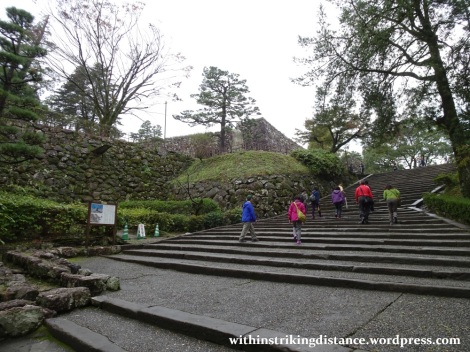








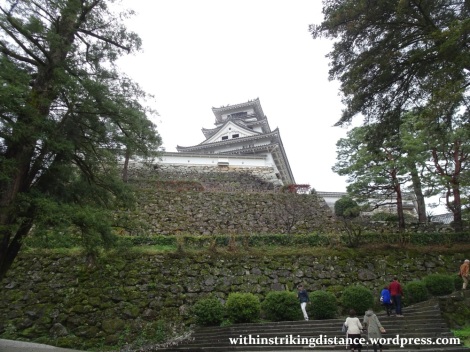



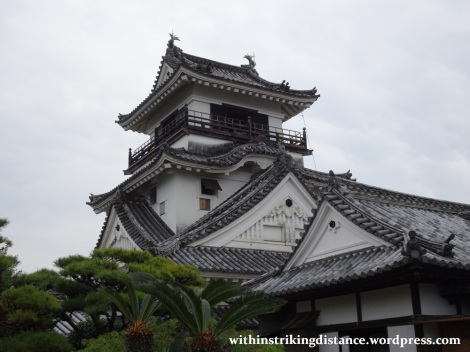


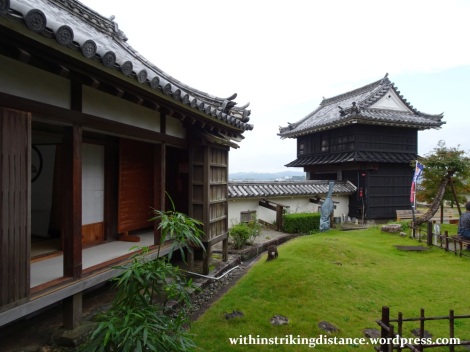











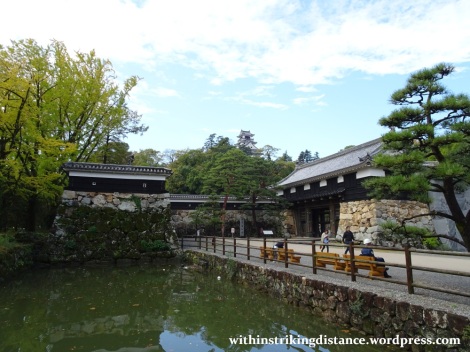
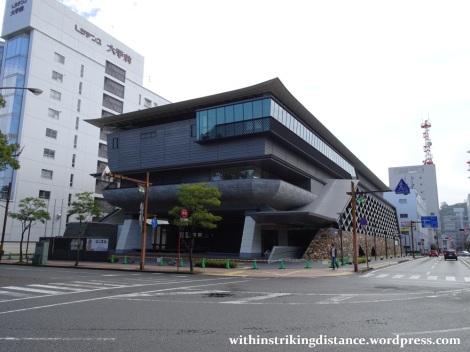
Pingback: Field Report: Marugame Castle, Kagawa Prefecture, Japan (19 November 2016) | Within striking distance·
Pingback: Field Report: Imabari Castle, Ehime Prefecture, Japan (21 November 2016) | Within striking distance·
Pingback: Field Report: Uwajima Castle, Ehime Prefecture, Japan (22 November 2016) | Within striking distance·
Pingback: Field Report: Ōzu Castle, Ehime Prefecture, Japan (23 November 2016) | Within striking distance·
Pingback: Rail Report: Trainspotting my way around Shikoku, Japan (19-23 November 2016) | Within striking distance·
Pingback: Field Report: The Ruins of Suncheon Japanese Castle, South Korea (26 January 2020) – Part 1 | Within striking distance·
Pingback: Field Report: The Ruins of Suncheon Japanese Castle, South Korea (26 January 2020) – Part 3 | Within striking distance·
Pingback: De puerto en puerto : El castillo de Kōchi·